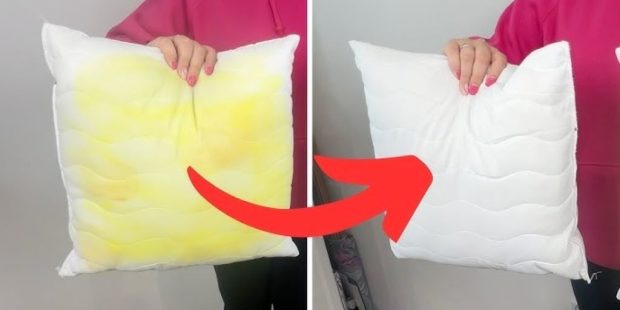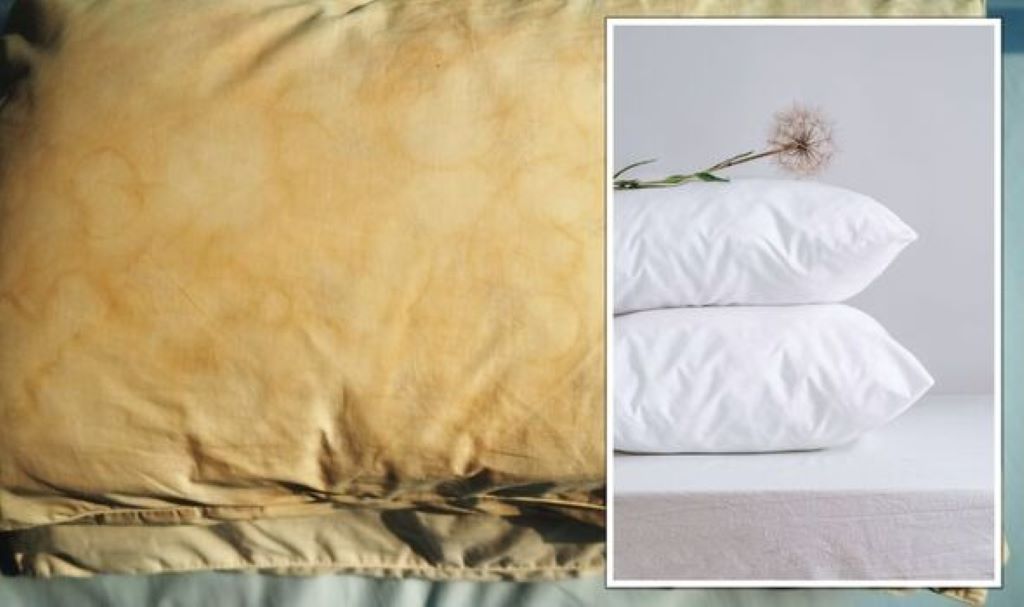
Yellow pillow stains are an unsightly but common issue in nearly every household. Over time, even the cleanest bedrooms can’t escape the creeping discoloration that turns fluffy white pillows into dingy, yellowed eyesores. But here’s the truth: you don’t need to throw them out or spend a fortune on replacements. There are several home-based, budget-friendly solutions for removing yellow stains from pillows that actually work—and we’re diving into them in detail.
Why Do Pillows Turn Yellow?
Before you tackle the stains, you need to understand what’s causing them. The biggest culprits behind yellow stains are sweat, body oils, drool, and product residues (like moisturizers or hair products). According to the National Sleep Foundation, the human body can produce up to one liter of sweat during a night’s sleep. That’s a staggering amount, and your pillow soaks up a good chunk of it night after night.
Additionally, airborne particles like dust and skin flakes settle on pillows and mix with moisture, accelerating the yellowing process. Over time, this forms the stubborn stains many people struggle to remove.
Are Yellow-Stained Pillows Unhygienic?
Yes, and no. Yellow stains themselves are mainly aesthetic—they don’t necessarily signal danger. However, stained pillows can harbor bacteria, fungi, and allergens. A study published in Allergy, Asthma & Immunology Research found that 50% of tested pillows contained fungi like Aspergillus fumigatus, a common allergen. So, cleaning isn’t just about looks—it’s also about your health.
The Best Home Remedies for Yellow Pillow Stains
Here’s the part you’ve been waiting for: the real-life hacks for removing yellow stains from pillows. These methods use ingredients most households already have. They’re cost-effective, eco-friendly, and surprisingly powerful.
-
Baking Soda and Vinegar Soak
This dynamic duo is a cleaning classic. Baking soda deodorizes and lifts stains, while vinegar breaks down oils and kills bacteria.
How to use:
- Fill a tub with hot water (enough to submerge your pillow)
- Add 1 cup of white vinegar and ½ cup of baking soda
- Soak the pillow for 30 minutes
- Wash in the machine on a gentle cycle with mild detergent
Why it works: Baking soda is alkaline, which helps neutralize acidic sweat stains. Vinegar’s acetic acid dissolves grime. Combined, they refresh your pillow thoroughly.
-
Hydrogen Peroxide and Dish Soap Mix
Hydrogen peroxide acts as a natural bleach without harsh chemicals, while dish soap cuts through greasy body oils.
How to use:
- Mix 1 cup hydrogen peroxide, ½ cup baking soda, and 1 tbsp of liquid dish soap
- Apply the mixture directly to stained areas
- Let it sit for 20-30 minutes
- Wash as usual
Expert insight: The Environmental Working Group supports hydrogen peroxide as a safer alternative to chlorine bleach, especially on fabrics.
-
Lemon Juice and Sunlight
Natural and aromatic, lemon juice lightens stains and adds a fresh scent.
How to use:
- Squeeze fresh lemon juice onto the stained spots
- Rub lightly with a soft cloth
- Leave the pillow in direct sunlight for 3–5 hours
Why it works: Citric acid in lemons acts as a natural bleaching agent. Sunlight boosts the effect by naturally breaking down stain molecules.
-
Enzyme Cleaners
These cleaners, found in laundry aisles, break down organic stains like sweat and saliva.
How to use:
- Spray enzyme cleaner on the stains
- Let it sit for at least 15 minutes
- Rinse, then wash with detergent
Pro tip: Look for brands that list “protease” or “amylase” in ingredients. These target protein-based stains effectively.
-
Borax Powder Boost
Borax, a natural mineral, enhances stain-fighting power and deodorizes fabrics.
How to use:
- Add ½ cup of Borax to your regular detergent in the wash
- Run on a hot water cycle with two rinse cycles
Consider this: Borax is safe when used properly but should be kept out of reach of children and pets.
Can You Machine Wash All Pillows?
Not all pillows are machine washable. Memory foam or latex pillows typically can’t go in the wash due to their dense composition. However, most polyester, down, and feather pillows are washable.
Check care tags. If there’s no tag, do a spot-cleaning test first.
How Often Should Pillows Be Cleaned?
Cleaning your pillows every 3-4 months helps prevent yellowing and prolongs their lifespan. Use pillow protectors as a barrier against sweat and oils, and wash pillowcases weekly.
According to Good Housekeeping, regular washing reduces bacteria by up to 90%. That’s a huge win for allergy sufferers.
When Should You Replace a Pillow?
Even with diligent care, no pillow lasts forever. Most experts recommend replacing pillows every 1–2 years. A sagging, permanently stained, or smelly pillow has likely reached the end of its lifecycle.
Frequently Asked Questions
- Are yellow pillow stains permanent?
Not always. Most yellow stains can be removed or significantly faded using the methods mentioned above. - Can you use bleach to whiten pillows?
Bleach can weaken fabric and is not recommended for colored pillows. It’s harsh and less effective than hydrogen peroxide or vinegar. - What’s the best pillow type to resist yellowing?
Memory foam resists sweat absorption but isn’t machine washable. Polyester and down pillows need more maintenance but clean up well. - Will a mattress cleaner work on pillows?
Some will, especially enzyme-based sprays. However, these are more for spot cleaning than deep stain removal. - How long do you soak pillows to remove yellow stains?
30–60 minutes is ideal, depending on the severity of the stains. - Can I dry my pillow in a dryer?
Yes, if the care label permits. Add dryer balls or tennis balls wrapped in socks to fluff them. - What if the yellow stain remains after washing?
Repeat the treatment. Some stains need a second round, especially if they’ve been there for months or years.
Final Thought
Stained pillows may feel like a lost cause, but they’re not. With a little elbow grease and the right home remedies, you can breathe new life into your bed and improve your sleep hygiene. The key lies in regular maintenance and the smart use of natural ingredients that work without damaging fabric or health.
These remedies are not just about looks—they’re about creating a cleaner, healthier sleep environment. So next time you catch a glimpse of a yellowed pillow, don’t toss it—treat it.
Let’s turn grimy to gleaming, one wash at a time.
Read More:
Why Does My Pillow Feel Damp in the Morning? Top Reasons and Simple Fixes

